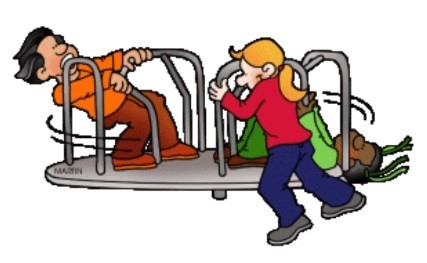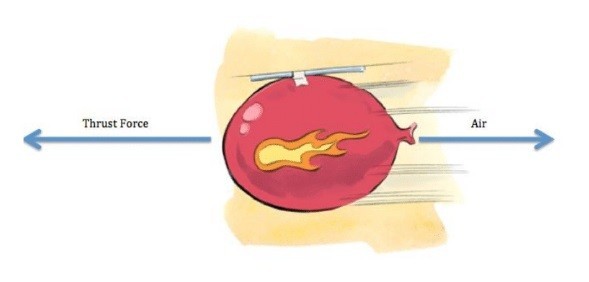
Overview
Title: Balloon Rockets
Grade: 5th Grade
Duration: 30 Minutes
Standards
Science – SC.5.P.13.1
Identify familiar forces that cause objects to move, such as pushes or pulls, including gravity acting on falling objects.
Language Arts – LAFS.5.RI.2.4
Determine or clarify the meaning of unknown and multiple-meaning words and phrases based on grade 5 reading and content, choosing flexibly from a range of strategies.
Essential Question
What makes objects move?
Vocabulary
Position • Force • Motion • Balanced Forces • Unbalanced Forces • Gravity • Speed • Acceleration • Velocity • Pull • Push • Mass • Friction • Magnet • Air Resistance • Inertia
Background Information
Motion occurs when an object moves from one place to another. Motion is determined by the forces that act on the object. There are some movements that might cause other movements to take place. Things change when an object moves at the same speed and/or in a straight line. Things around us are constantly moving and changing.
Terms that go hand in hand with learning about motion:
- Speed
- Velocity
- Acceleration
- Force
- Mass
- Three Laws of Motion

Guiding Questions
- What makes objects move?
- What is the relationship between force and motion?
- What types of forces can you identify?
- What is needed to start an object moving?
- How does the mass of an object influence motion?
- How does friction affect a moving object?
- How are speed, velocity, and acceleration related?
- What forces cause objects to change their motion?
- How do Newton’s laws explain the principles of force and motion?
- How is momentum related to each of Newton’s 3 laws of motion?
Inquiry Type
- Controlled Inquiry/Small Groups – Activity – Balloon Rockets Lab
Balloon Rockets Lab

Problem Statement
What forces are acting on the balloon rocket?
Materials
Each group will need:
- Activity – Balloon Rockets Lab
- 1-plastic straw
- 1-balloon (round ones will work, but the longer balloons work best)
- Tape
- Measuring tape or meter/yard stick
- 1-long piece of kite string (about 10-15 feet long)
- fishing line, nylon string, and/or cotton string (optional)
Procedure
Make sure to follow the following procedures. Watch closely in order to make observations about what occurs and document what happens.
- Tie one end of the string to a chair, door knob, or other support.
- Put the other end of the string through the straw.
- Pull the string tight and tie it to another support in the room.
- Blow up the balloon (but don’t tie it.) Pinch the end of the balloon and tape the balloon to the straw.
- Now, you are ready for launch.
- Let the pinched end off the balloon go and watch the rockets fly!
- What happened? How far did the balloon travel? Use measuring tape or yard stick to measure the distance. Discuss.
- Did the shape of the balloon affect how far (or fast) the rocket travels?
- Do you think the length of the straw affects how far (or fast) the rocket travels?
- Does the type of string affect how far (or fast) the rocket travels? (Try fishing line, nylon string, cotton string, etc.)
- Does the angle of the string affect how far (or fast) the rocket travels?
What happened?
The force from the air moving in one direction propels the balloon in the other direction, much like a rocket.
